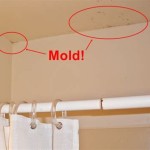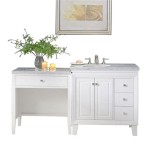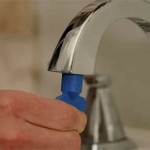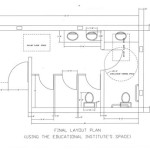How To Build A Bathroom Vanity Out Of Pallets
Repurposing materials is an increasingly popular practice in home improvement, driven by cost savings, environmental consciousness, and the desire for unique, personalized designs. Pallets, readily available and often discarded, offer a versatile resource for various projects, including bathroom vanities. Constructing a bathroom vanity from pallets presents a cost-effective and creative way to enhance a bathroom's aesthetic while contributing to sustainable practices. This article provides a detailed guide on building a functional and visually appealing bathroom vanity using pallet wood.
Prior to commencing the project, careful consideration must be given to the type of pallet used. Not all pallets are suitable for interior projects, particularly those involving water exposure. Pallets are often treated with chemicals for pest control and preservation. Markings on the pallet will indicate the type of treatment it has undergone. Pallets marked with "HT" have been heat-treated and are generally safe for indoor use. Avoid pallets marked with "MB" as they have been treated with methyl bromide, a highly toxic fumigant. Opt for clean, untreated pallets whenever possible to ensure the safety of the project and the well-being of the occupants.
Furthermore, the condition of the pallet wood is paramount. Inspect each pallet thoroughly for signs of rot, mold, insect infestation, or significant damage. Select pallets with solid, intact boards that are free from excessive warping or cracking. The quantity of pallets required will depend on the desired size and design of the vanity. It is advisable to have extra pallets on hand to account for unusable boards and potential design modifications.
1. Planning and Preparation
Effective planning is crucial for a successful pallet vanity build. The initial step involves determining the dimensions of the vanity. This decision should be informed by the available space in the bathroom, the size of the sink, and the desired storage capacity. Measure the area where the vanity will be installed, taking into account any existing plumbing and ensuring adequate clearance for doors and drawers.
Once the dimensions are established, create a detailed sketch or blueprint of the vanity. This drawing should include precise measurements for all components, such as the overall width, height, and depth, as well as the dimensions of individual shelves, drawers, and doors. Consider the placement of the sink and faucet, and plan for any necessary cutouts or modifications to the pallet wood. The design should also account for the plumbing connections and any required access panels.
After the design is finalized, gather the necessary tools and materials. Essential tools include a circular saw or hand saw, a drill with various bits, a sander, a measuring tape, a level, a square, a hammer, and safety glasses. Additional materials include screws, nails, wood glue, sandpaper (various grits), wood stain or paint, sealant or varnish, and hardware such as hinges, drawer slides, and knobs or pulls. Safety equipment, including gloves and a dust mask, should be worn throughout the project.
Before beginning the construction, the pallet wood must be properly prepared. This involves disassembling the pallets, removing any nails or staples, and thoroughly cleaning the wood. Use a pry bar or similar tool to carefully separate the pallet boards, taking care to avoid splitting or damaging the wood. Employ a metal detector to identify and remove any remaining metal fasteners. Once the pallets are disassembled, clean the boards with a brush and soapy water to remove dirt, grime, and any loose debris. Allow the wood to dry completely before proceeding to the next step.
Following cleaning, the pallet wood needs to be sanded to create a smooth and even surface. Begin with a coarse-grit sandpaper (e.g., 80-grit) to remove any rough spots, splinters, and imperfections. Gradually work your way to finer grits (e.g., 120-grit, 220-grit) to achieve a polished finish. Sanding not only enhances the appearance of the wood but also prepares it for staining or painting. Ensure that all surfaces are thoroughly sanded, including edges and corners.
2. Construction of the Vanity Frame
The foundation of the pallet vanity is the frame, which provides structural support and determines the overall shape of the unit. Cut the pallet boards to the required lengths according to the dimensions specified in the blueprint. Ensure that all cuts are precise and square to ensure a stable and symmetrical frame. A miter saw can be used for accurate and consistent cuts, but a circular saw or hand saw can also be used with careful measurement and marking.
Assemble the frame by joining the cut pallet boards using screws and wood glue. The glue provides additional strength and stability to the joints. Clamp the pieces together while the glue dries to ensure a tight and secure bond. The specific construction method will depend on the design of the vanity, but typically involves creating a rectangular or square frame as the base, with vertical supports for the sides and back. Maintain squareness throughout the assembly process to prevent the vanity from being wobbly or uneven.
For added strength, consider incorporating corner braces or reinforcing blocks into the frame. These supports can be made from scrap pallet wood and attached to the inside corners of the frame using screws and glue. This will help to prevent the frame from racking or twisting under load. Also, carefully consider how the legs or base of the vanity will be constructed, ensuring that they are sturdy and can support the weight of the sink and other items.
Once the frame is assembled, attach the side and back panels. These panels can be constructed from pallet boards cut to the appropriate size and attached to the frame using screws and glue. Ensure that the panels are flush with the frame and that all edges are aligned. The back panel can be omitted or partially omitted to allow for plumbing connections, depending on the design of the vanity. If the back panel is omitted, consider adding horizontal supports to maintain the rigidity of the frame.
If the design includes drawers or shelves, construct the drawer boxes and shelves separately. Drawer boxes can be assembled using the same techniques as the frame, ensuring that they are the correct size to fit within the frame openings. Attach drawer slides to the drawer boxes and the inside of the frame to allow for smooth and easy drawer operation. Shelves can be made from pallet boards cut to the appropriate size and attached to the frame using screws and shelf supports. Consider the weight capacity of the shelves and adjust the thickness of the wood and the number of supports accordingly. Accurate measurements are crucial in this step to ensure a proper fit.
3. Finishing and Installation
After the vanity frame and components are constructed, the finishing process begins. This involves sanding, staining or painting, and sealing the wood to protect it from moisture and enhance its appearance. Before applying any finish, thoroughly inspect the wood for any remaining imperfections and sand them smooth. Remove any dust or debris with a tack cloth to ensure a clean surface for the finish.
Apply a wood stain or paint to the vanity, choosing a color that complements the bathroom decor. Multiple coats may be required to achieve the desired color intensity. Follow the manufacturer's instructions for application and drying times. Applying a primer before painting can improve adhesion and coverage. Consider using a water-based stain or paint to minimize volatile organic compounds (VOCs). Allow the stain or paint to dry completely before proceeding to the next step.
Once the stain or paint is dry, apply a sealant or varnish to protect the wood from moisture and wear. Choose a sealant or varnish that is specifically designed for use in bathrooms, as these products are typically more resistant to water damage. Apply multiple coats of sealant or varnish, following the manufacturer's instructions for application and drying times. Sand lightly between coats to create a smooth and even finish. A polyurethane varnish is a durable and water-resistant option for bathroom vanities. Adequate ventilation is necessary when working with sealants and varnishes.
Install the sink and faucet according to the manufacturer's instructions. Ensure that the sink fits properly in the vanity and that the drain and water supply lines are correctly connected. Use plumber's putty or silicone caulk to seal the sink to the vanity and prevent leaks. Test the plumbing connections thoroughly to ensure that there are no leaks before completing the installation. Adhere to local plumbing codes during the installation process.
Install the hardware, such as hinges, drawer slides, and knobs or pulls. Choose hardware that complements the style of the vanity and is durable enough to withstand daily use. Align the hardware carefully and use appropriate screws to attach it securely. Adjust the hinges and drawer slides as needed to ensure smooth and proper operation. Consider using soft-close hinges and drawer slides for added convenience and durability.
Finally, install the pallet vanity in the bathroom, ensuring that it is level and securely attached to the wall. Use shims to level the vanity if necessary. Secure the vanity to the wall studs using screws and wall anchors. Conceal any exposed plumbing pipes with decorative covers or panels. Add any finishing touches, such as decorative trim or molding, to complete the project. Regularly inspect and maintain the vanity to ensure its longevity and prevent water damage.

Make A Grill Stand Out Of Wood Pallet Habitat Re

Diy Pallet Bathroom Vanity And Mirror Pallets Pro

Diy Pallet Bathroom Vanity And Mirror Pallets Pro

Diy Pallet Bathroom Vanity And Mirror Pallets Pro
Diy Pallet Projects Bathroom Vanities Even Beginners Can Do
Diy Pallet Projects Bathroom Vanities Even Beginners Can Do

Diy Pallet Bathroom Vanity

Our New Free Bathroom Cabinet Homemade From Pallet Wood Penniless Paing

Diy Pallet Wood Vanity 101 Pallets

10 Diy Woden Pallet Vanity Plans And Ideas Western Bedroom Decor Home Furniture
Related Posts







